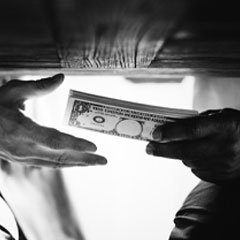The Truth Behind The Decision of Consumers in Buying Counterfeit Cosmetics Product: A Qualitative Phenomenological Research
DOI:
https://doi.org/10.31106/jema.v15i2.954Keywords:
Consumer Behavior, Cosmetics, Counterfeit ProductAbstract
Research conducted is a type of qualitative phenomenological research that reveal and understand the meaning behind the phenomenon of the actions of individuals who perform various actions on the basis of their own perceptions as well as aspects of the background of the action. The number of informants in this study are six people. Sampling method of this study used purposive sampling with snowball sampling method. The findings shows that well recognized or reputable brand considered to be one of the reasons consumers choose to buy stimulation of brand POND’S. Marketing stimuli such as advertising on television, the product that suits consumer needs in affordable price can stimulate consumers buying decision. Low price of POND’S counterfeit product is the main considerations in encouraging buying decision. High consumer loyalty toward original POND’S brand made them decide to buy counterfeit POND’S without considering the authenticity and its side effect on consumer health. Reference groups that dominate consumer minds in buying the counterfeit POND’S product are workmate and store employees where the product is sold. Motivation in seeking new products and the high level of trust toward Unilever brand (POND’S) encourages consumers to buy counterfeit POND’S. Private sources (office colleagues) and commercial (TV advertisement) considered as main information sources for a consumer in buying POND’S and counterfeit POND’S counterfeit.References
Amir, T. (2005). Dinamika Pemasaran. Jakarta: Liberty.
Ang, S. H., Cheng, P. S., Lim, E. A. C., & Tambyah, S. K. (2001). Spot the Difference: Consumer Responses Towards Counterfeits. Journal of Consumer Marketing, 18(3), 219-35, https://doi.org/10.1108/07363760110392967.
Bearden, W. O., Netemeyer, R. G., & Teel, J. E. (1989). Measurement of Consumer Susceptibility to Interpersonal Influence. Journal of Consumer Research, 15(4), 473-481 https://doi.org/10.1086/209186.
Bloch, P. H., Bush, R. F., & Campbell, L. (1993). Consumer Accomplices in Product Counterfeiting, A Demand Side Investigation. Journal of Consumer Marketing, 10(4), 27-36, , https://doi.org/10.1108/07363769310047374.
Bogdan, R. C., & Biklen, S. K. (2003). Qualitative Research for Education: An Introduction to Theory and Methods, Fourth Edition. Needham Height, MA: Allyn & Bacon.
Burkholder, D. U. (2009). Returning Counselor Education Doctoral Students: Issues of Retention and Perceived Experiences (Doctoral dissertation. Kent State University College and Graduate School of Education, Health, and Human Services).
Creswell, J. W. (2007). Qualitative Inquiry and Research Design: Choosing among Five Traditions, Second Edition. Thousand Oaks, CA: Sage Publications.
Field, J. R. B. (2000). An Empirical Investigation of Consumers’ Perceptions and Purchase Intentions of Counterfeit Products: A Means-End Chain Analysis (Doctoral dissertation. Mississippi State University).
Hawkins, D. I., Coney, K. A., & Best, R. J. (1980). Consumer Behavior: Implications for Marketing Strategy. Dalass, Texas: Business Publications.
Hidayat, A. & Mizerski, K. (2005). Pembajakan Produk: Problema, Strategi dan Antisipasi Strategi. Jurnal Siasat Bisnis, 1(10), 95-122.
Peter, J. P., & Olson, J. C. (2005). Consumer Behaviour, Perilaku Konsumen dan Strategi Pemasaran. Jakarta: Penerbit Erlangga.
Kotler, P., & Armstrong, G. (2008). Principles of Marketing. Twelfth Edition. New Jersey : Pearson Education, Inc.
Kotler, P., & Keller, K. L. (2006). Marketing Management. Twelfth Edition. New Jersey : Pearson Education, Inc.
Lai, K. K. Y. & Zaichkowsky, J. L. (1999). Brand Imitation: Do the Chinese have different views? Asia Pacific Journal of Management, 16, 179-192, https://doi.org/10.1023/A:1015482707900.
Maxwell, J. A. (2005). Qualitative Research Design: An Interactive Approach, Second Edition. Thousand Oaks. CA: Sage Publications.
Morissan. (2012). Sales Marketing. Pokok Bahasan: Segmentasi Pasar. Modul 6. Universitas Mercubuana.
Nieswiadomy, R. M. (2002). Foundation of Nursing Research. Fourth Edition. Upper Saddle River: Prentice Hall.
Penz, E., & Stöttinger, B. (2005). Forget the Real Thing-Take the Copy! An Explanatory Model for the Volitional Purchase of Counterfeit Products. Advances in Consumer Research, 32, 568-75. .
Poerwandari, E. K. (2001). Pendekatan Kualitatif untuk Penelitian Perilaku Manusia, Edisi Revisi Jakarta: LPSP3 UI.
Purnamawati, S. S. (2009). Perilaku Pekerja Perempuan Penyapu Jalan Terhadap Kosmetik Pemutih di Kota Medan (Doctoral dissertation, Thesis. Program Studi Magister Ilmu Kesehatan Masyarakat Fakultas Kesehatan Masyarakat Universitas Sumatra Utara, Medan).
Sugiyono. (2011). Metode Penelitian Kuantitatif, Kualitatif, dan R & D. Bandung: Alfabeta.
Tommy, H. T. (2012). Pengaruh Faktor Sosial Dan Personal Terhadap Sikap Dan Niat Beli Konsumen Untuk Barang Fashion Palsu di Kota Denpasar Dan Kabupaten Badung (Doctoral dissertation, Thesis, Program Pascasarjana Universitas Udayana, Denpasar).
Wang, F., Zhang, H., Zang, H., & Ouyang, M. (2005). Purchasing Pirated Software: an Initial Exaniation of Chinese Consumers. Journal of Consumer Marketing, 22(6), 340-51, https://doi.org/10.1108/07363760510623939.
Widana, G. A. B, & Yuningrat, N. W. (2007). Analisis Bahan Pewarna Berbahaya Pada Sediaan Kosmetika Di Wilayah Kecamatan Buleleng Kabupaten Buleleng. Jurusan Analis Kimia, Fakultas MIPA Undiksha. Jurnal Penelitian dan Pengembangan Sains & Humaniora, 1(1), 26-36.









